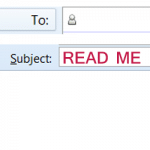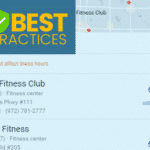The holidays are a wonderful yet underappreciated opportunity for health and wellness businesses. Why?
Your current customers would like nothing better than to find your fitness, nutrition and healthy lifestyle services in their stockings. And they’d love to find a way to share those gifts with their friends and family.
But you’re not an iPhone or this year’s hot toy.
Your healthy lifestyle services can’t market themselves.
They need help – and it starts with a purposeful holiday marketing plan.
Sit down with your team – or head to Starbucks if your team is just you! – to complete these five essential holiday marketing planning activities:
1. Learn from last year’s holiday marketing activities
What worked? What didn’t?
How was your timing? Did you get the word out early enough? Did you wait too long?
How was your frequency? Did you do several promotional activities, or send just a single email?
If you relied exclusively on social media like Facebook and Twitter, did you see the sales results you hoped for?
How was your positioning? Did you make it easy for potential shoppers to picture your services as gifts for their loved ones?
What did customers ask for that you didn’t have?
Were there any ideas where you said “Ooh, next year we should definitely do that!”
Were there any major problems – for example, not enough holiday appointment availability?
If you sent holiday marketing emails, which ones worked best? Which ones had a higher level of spam reports or unsubscribes or really low open rates?
2. Choose this year’s mix of marketing activities
You’ve got lots to choose from – stuff you can do on your health club or health coaching website, in your yoga studio newsletter, through radio, marketing emails, printed flyers, purchased advertising, store banners and posters, events, counter displays and social media like Twitter and Facebook.
Keep in mind that it’s better to use several channels – say, email marketing and print advertising plus an event – than it is to rely exclusively on just one channel, like email only.
And you absolutely shouldn’t rely on a flurry of tweets and FB posts to do your holiday marketing for you. They can be part of the plan – but they’re not THE plan.
3. Choose the programs and services you plan to spotlight
Select products and services that lend themselves to gift-giving.
Energy bars and other healthy snacks can make great stocking stuffers or small office gifts, for example.
A workout product like FitDeck is a great choice for someone who likes to work out. On the other hand, weight loss programs may need some repositioning to work as a holiday gift, as we describe below.
4. Determine how to position featured programs and services
Reposition services if it will improve sales. For the holiday season, perhaps your holiday marketing reconceptualizes your weight loss program as a powerful lifestyles program that boosts energy and zaps stress.
Generic gift cards are dull. And simply encouraging shoppers to “buy our gift certificates for your friends and family” is not a marketing strategy. It’s just wishful thinking.
What works better: help shoppers picture the wellness experience that their recipient will use your gift card for. You’re not selling a $250 gift certificate – you’re selling a “Ski Longer, Ski Faster!” personal training package!
5. Choose a small customer gift to strengthen your customer ties
The holidays offer a unique opportunity to strengthen customer connections with a small creative and distinctive holiday memento or gift – something that’s specifically relevant to your business.
For example, you could offer a sticker sheet if your clients are kids, or something like the Wellness Manifesto we gave our subscribers, clients and customers a couple of years ago. It could even be a PDF or a nicely printed one-pager of the top 25 tips from your clients and customers. It doesn’t need to have a holiday theme.
One caveat – gifts are free. They don’t cost anything to enjoy. Coupons and discounts aren’t gifts. Know the difference.




